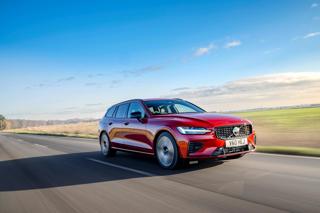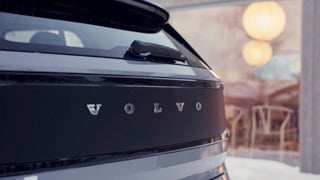Simon Harris finds out how it feels to relinquish control in a self-driving Volvo S60 prototype at the new AstaZero test facility in Sweden.
Mention self-driving cars and people may imagine the rather bulbous and cartoon-esque Google car announced recently rather than the crime-fitting Kitt that appeared in the TV series Knight Rider.
When Fleet News was asked if it wanted to be one of the first publications to test a self-driving car, we were keen to find out how it would feel and whether any misgivings about ceding too much control to technology is justified.
When I attended the opening of the AstaZero test track, one of the many safety demonstrations was to try a self-driving Volvo S60 prototype.
I sat behind the wheel while the car drove around a part of the track meant to simulate high-speed rural roads, keeping a safe distance from the vehicle in front and keeping in the centre of the lane.
I was in the vehicle for a total of 10 miles and nothing happened that suggested the vehicle, its occupants and other road users were put at risk.
The prototype disengaged autonomous mode in the same way as cancelling cruise control, by applying the brakes, but Volvo says when the technology reaches production cars there will be a more definitive and failsafe way of resuming hands-on control of the car.
Perhaps I’m blasé from trying elements of all this technology in new cars over the years. The autonomous cars of the future will merely be joining up these features.
Adaptive cruise control, lane-keeping assistance, blindspot warnings, autonomous emergency braking and collision mitigation technology will all be working together.
At no point did I feel uneasy about the car following the meandering country road. Of course, when these vehicles appear on public roads, they will have to follow navigation instructions and we’re still a few years away from the technology being ready for all real-life road situations.
Erik Coelingh, technical specialist at Volvo Car Group, explains that if customers were to choose a new Volvo with the maximum level of autonomous features currently available, the cost would be around €2,000 (£1,600), while a fully autonomous car would require around twice the number of sensors to operate safely.
This could see customers paying a premium of £3,000 or more to buy a fully autonomous vehicle.
This is expensive, but the technology is all about reducing risk. Human error ultimately is involved in all vehicle incidents in some way. Increases in cost should be offset by lower insurance bills, as we have already seen in vehicles that have autonomous emergency braking as standard.
The vehicle insurance industry will need to evolve and focus more on insuring components that allow autonomous driving, rather than the drivers themselves. There would also be fuel efficiency and SMR benefits as self-driving cars would keep to speed limits, accelerating and braking more gently, so reducing wear and tear on components.
Volvo’s Vision 2020 objective is that no one will be seriously injured or killed in a new Volvo by 2020. Beyond that, the aspiration is that no new Volvo car will crash. We witnessed two self-driving Volvos drive toward each other at high speed, then subtly change their trajectory to avoid a collision.
Many car manufacturers also see the potential of the technology, and there were a number of current Mercedes-Benz models in the AstaZero demonstrations. Audi has also recently revealed that a vehicle has done autonomous laps of the Hockenheim race circuit in Germany.
- For an extended version of this feature, look out for the next issue of Fleet News (November 13), which is the first of our safety-themed issues. The November 13 issue looks at safety and product while the November 27 issue will focus on safety and people.






















Dave Donovan - 18/11/2014 08:49
If or maybe when it comes about the stellar difference between one of these cars and the vehicle being driven by a distracted vehicle operator will cause chaos. And then there's the lost revenue from speeding and other traffic offences when we all drive/sit-in one of these, how will the 'safety awareness' group make the shortfall in their income, maybe find another stealth tax on what will become the 'passenger' rather than the motorist. It has to said too that some of us actually quite like driving and find the car control aspect of it the reason why we do it. May make it a challenge avoiding an accident with a car that is avoiding an accident with another car avoiding an accident.